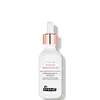What's inside
What's inside
 Key Ingredients
Key Ingredients

 Benefits
Benefits

 Concerns
Concerns

No concerns
 Ingredients Side-by-side
Ingredients Side-by-side

Water
Skin ConditioningIsododecane
EmollientPolyglyceryl-6 Polyricinoleate
EmulsifyingPropanediol
SolventDimethicone
EmollientCaprylic/Capric Triglyceride
MaskingTrimethylsiloxysilicate
EmollientButyloctyl Salicylate
Skin ConditioningCoco-Caprylate/Caprate
EmollientIsoamyl Laurate
EmollientNeopentyl Glycol Diheptanoate
EmollientPolyglyceryl-10 Dioleate
EmulsifyingLecithin
EmollientPolyhydroxystearic Acid
EmulsifyingEctoin
Skin ConditioningPolymethylsilsesquioxane
Polysilicone-11
Disteardimonium Hectorite
StabilisingButyrospermum Parkii Butter
Skin ConditioningGlycerin
HumectantPhenoxyethanol
PreservativePropylene Carbonate
SolventAminomethyl Propanol
BufferingCitrus Aurantium Dulcis Peel Oil
MaskingEthylhexylglycerin
Skin ConditioningPolysorbate 20
EmulsifyingSclareolide
MaskingTocopheryl Acetate
AntioxidantDimethicone/Vinyl Dimethicone Crosspolymer
Skin ConditioningDimethiconol
EmollientLinalool
PerfumingLinalyl Acetate
MaskingPlankton Extract
Skin ConditioningLavandula Angustifolia Oil
MaskingLavandula Hybrida Oil
EmollientDecyl Glucoside
CleansingSodium Ascorbate
AntioxidantCaprylyl Glycol
EmollientHexylene Glycol
EmulsifyingTocopherol
AntioxidantWater, Isododecane, Polyglyceryl-6 Polyricinoleate, Propanediol, Dimethicone, Caprylic/Capric Triglyceride, Trimethylsiloxysilicate, Butyloctyl Salicylate, Coco-Caprylate/Caprate, Isoamyl Laurate, Neopentyl Glycol Diheptanoate, Polyglyceryl-10 Dioleate, Lecithin, Polyhydroxystearic Acid, Ectoin, Polymethylsilsesquioxane, Polysilicone-11, Disteardimonium Hectorite, Butyrospermum Parkii Butter, Glycerin, Phenoxyethanol, Propylene Carbonate, Aminomethyl Propanol, Citrus Aurantium Dulcis Peel Oil, Ethylhexylglycerin, Polysorbate 20, Sclareolide, Tocopheryl Acetate, Dimethicone/Vinyl Dimethicone Crosspolymer, Dimethiconol, Linalool, Linalyl Acetate, Plankton Extract, Lavandula Angustifolia Oil, Lavandula Hybrida Oil, Decyl Glucoside, Sodium Ascorbate, Caprylyl Glycol, Hexylene Glycol, Tocopherol
Zinc Oxide 20.28%
Cosmetic ColorantIsododecane
EmollientPolysilicone-11
C13-15 Alkane
SolventButyloctyl Salicylate
Skin ConditioningPropanediol Dicaprylate/Caprate
EmollientDimethicone
EmollientPolyhydroxystearic Acid
EmulsifyingCastor Oil/Ipdi Copolymer
Dilinoleic Acid/Butanediol Copolymer
Disodium Stearoyl Glutamate
CleansingPolyglyceryl-6 Polyricinoleate
EmulsifyingPolyglyceryl-3 Polyricinoleate
EmulsifyingTriethoxycaprylylsilane
Lecithin
EmollientCoco-Caprylate/Caprate
EmollientCamellia Oleifera Seed Oil
Skin ConditioningKinetin
Skin ConditioningPrunus Armeniaca Kernel Oil
MaskingSqualane
EmollientAloe Barbadensis Leaf Extract
EmollientCarthamus Tinctorius Seed Oil
MaskingHydrated Silica
AbrasiveTocopheryl Acetate
AntioxidantCI 77491
Cosmetic ColorantCI 77492
Cosmetic ColorantCI 77499
Cosmetic ColorantZinc Oxide 20.28%, Isododecane, Polysilicone-11, C13-15 Alkane, Butyloctyl Salicylate, Propanediol Dicaprylate/Caprate, Dimethicone, Polyhydroxystearic Acid, Castor Oil/Ipdi Copolymer, Dilinoleic Acid/Butanediol Copolymer, Disodium Stearoyl Glutamate, Polyglyceryl-6 Polyricinoleate, Polyglyceryl-3 Polyricinoleate, Triethoxycaprylylsilane, Lecithin, Coco-Caprylate/Caprate, Camellia Oleifera Seed Oil, Kinetin, Prunus Armeniaca Kernel Oil, Squalane, Aloe Barbadensis Leaf Extract, Carthamus Tinctorius Seed Oil, Hydrated Silica, Tocopheryl Acetate, CI 77491, CI 77492, CI 77499
Ingredients Explained
These ingredients are found in both products.
Ingredients higher up in an ingredient list are typically present in a larger amount.
Butyloctyl Salicylate is a chemical UV filter structurally similar to octisalate. It is a photostabilizer, SPF booster, emollient and solvent. This ingredient helps evenly spread out ingredients.
According to a manufacturer, it is suitable for pairing with micro Titanium Dioxide, Zinc Oxide, and pigments.
Photostabilizers help stabilize UV-filters and prevents them from degrading quickly.
Learn more about Butyloctyl SalicylateCoco-Caprylate/Caprate is created from fatty coconut alcohol, caprylic acid, and capric acid.
It is a lightweight emollient. Emollients create a thin barrier on the skin to trap moisture in. This helps keep your skin hydrated and soft.
Once applied, Coco-Caprylate/Caprate is absorbed quickly and leaves a silky feel.
Coco-Caprylate/Caprate may not be fungal acne safe.
Learn more about Coco-Caprylate/CaprateDimethicone is a type of synthetic silicone created from natural materials such as quartz.
What it does:
Dimethicone comes in different viscosities:
Depending on the viscosity, dimethicone has different properties.
Ingredients lists don't always show which type is used, so we recommend reaching out to the brand if you have questions about the viscosity.
This ingredient is unlikely to cause irritation because it does not get absorbed into skin. However, people with silicone allergies should be careful about using this ingredient.
Note: Dimethicone may contribute to pilling. This is because it is not oil or water soluble, so pilling may occur when layered with products. When mixed with heavy oils in a formula, the outcome is also quite greasy.
Learn more about DimethiconeIsododecane is a fragrance, emollient, and solvent.
As an emollient, it helps your skin stay soft and hydrated. Emollients help trap moisture into your skin.
Isododecane's role as a solvent makes it a great texture enhancer. It spreads smoothly on skin and does not leave a sticky feeling behind. Isododecane also helps prevent color transfer in makeup products.
Isododecane is not absorbed into skin.
Learn more about IsododecaneLecithin is a term for a group of substances found in the cell membranes of plants, animals, and humans. They are made up of mixture of phospholipids.
This ingredient has emollient and emulsifying properties.
As an emollient, lecithen helps soften the skin and creates a barrier to keep moisture in.
As an emulsifier, it also helps prevent water and oil ingredients from separating. Lecithin can also help ingredients be better absorbed by the skin.
This is because the phospholipids in lecithin produce liposomes. Liposomes help other ingredients get through the skin barrier.
Depending on the source of this ingredient, lecithin may not be fungal acne safe. This is because some sources of lecithin come from soybean oil, which may feed the malassezia yeast that feeds fungal acne.
We recommend reaching out to the brand you are purchasing from to inquire about the source of their lecithin.
Some other names for this ingredient include soy lecithin and deoiled soy lecithin.
Learn more about LecithinPolyglyceryl-6 Polyricinoleate isn't fungal acne safe.
Polyhydroxystearic Acid is a soft wax made from castor oil.
It is is a texture thickener, emulsifier, and film-former. Emulsifiers prevent ingredients from separating, such as oils and waters.
Polyhydroxystearic Acid may not be fungal acne safe.
Learn more about Polyhydroxystearic AcidPolysilicone-11 is a film-forming silicone that creates a non-tacky and matte finish on the skin. It's commonly used to improve texture, absorb excess oil, and help active ingredients spread evenly.
Due to its "rubber-like" structure, it stays on the skin's surface instead of being absorbed. On the skin, it creates a flexible layer that enhances wearability and stability.
Tocopheryl Acetate is AKA Vitamin E. It is an antioxidant and protects your skin from free radicals. Free radicals damage the skin by breaking down collagen.
One study found using Tocopheryl Acetate with Vitamin C decreased the number of sunburned cells.
Tocopheryl Acetate is commonly found in both skincare and dietary supplements.
Learn more about Tocopheryl Acetate